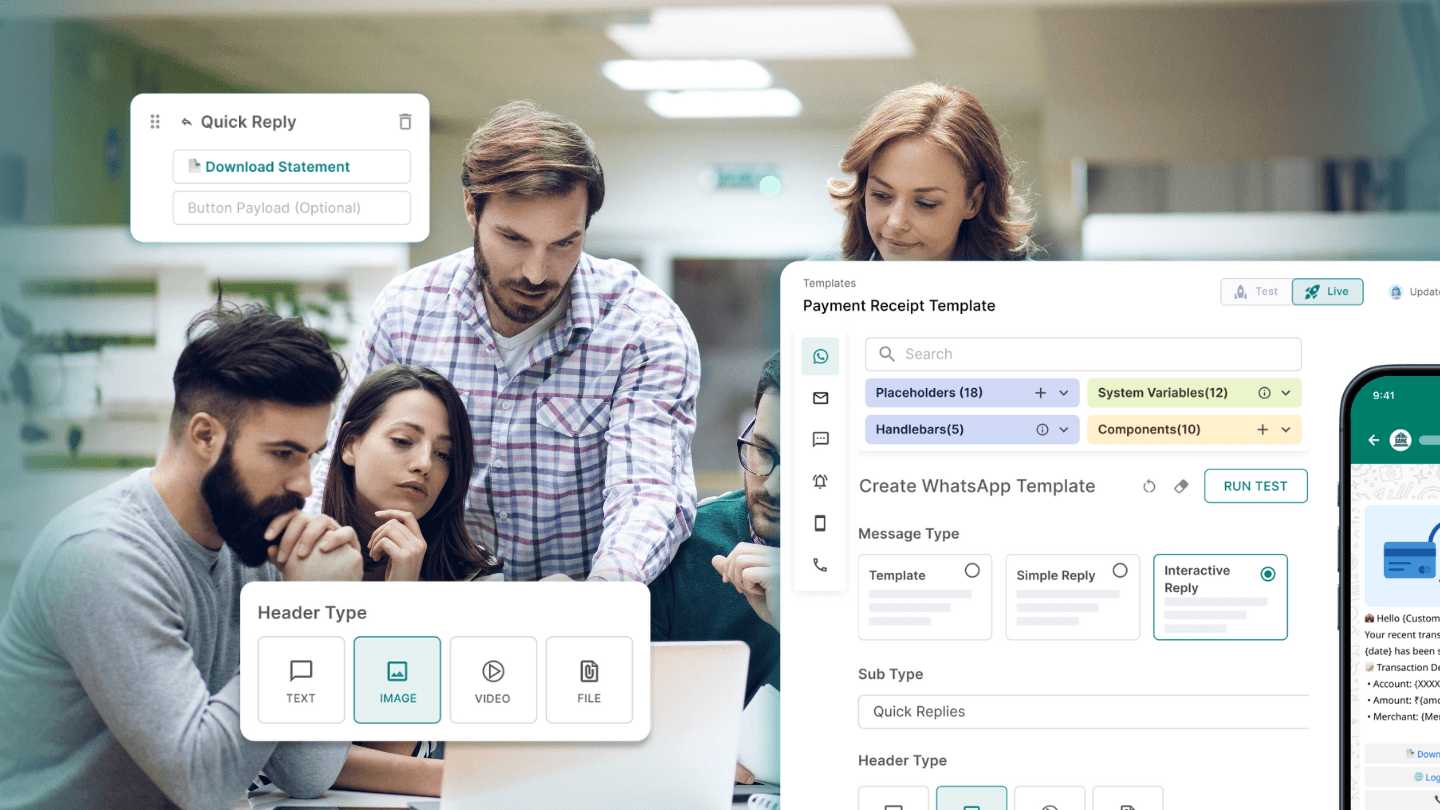As a business, ensuring the authenticity of your messages is crucial. It builds customer trust and safeguards your brand from potential impersonators. This is where DLT (Distributed Ledger Technology) comes into play.
In the past, the lack of standardization in business communication led to widespread fraud and scams. Fraudulent entities could easily impersonate legitimate businesses, sending out spam messages and scamming unsuspecting customers. For instance, scammers would pose as banks, sending fake SMS alerts to trick people into revealing their sensitive financial information.
To combat these issues and protect consumers, the Telecom Regulatory Authority of India (TRAI) introduced the DLT system. DLT registration is mandatory for businesses sending bulk SMS to protect privacy and combat spam. This process involves registering with telecom service providers and getting approval for message templates.
DLT is a blockchain-based technology that ensures the authenticity and compliance of business messages, creating a secure, transparent, and tamper-proof record of all business communications.
Under the DLT system, businesses must register themselves and get approval for their message templates from their telecom service providers before sending them to customers. This mandatory process aims to safeguard customers from fraudulent and unsolicited messages.
While DLT registration offers many benefits, it also comes with some operational challenges, like the difficulty in managing content template approvals with service providers.
We’ll talk about that later in the article.
But before that, let’s quickly examine DLT—how it works, its benefits, and the registration process. We’ll also discuss why getting content templates approved can be a headache for businesses.
Finally, we’ll discuss how Fyno simplifies this DLT content template approval for businesses.
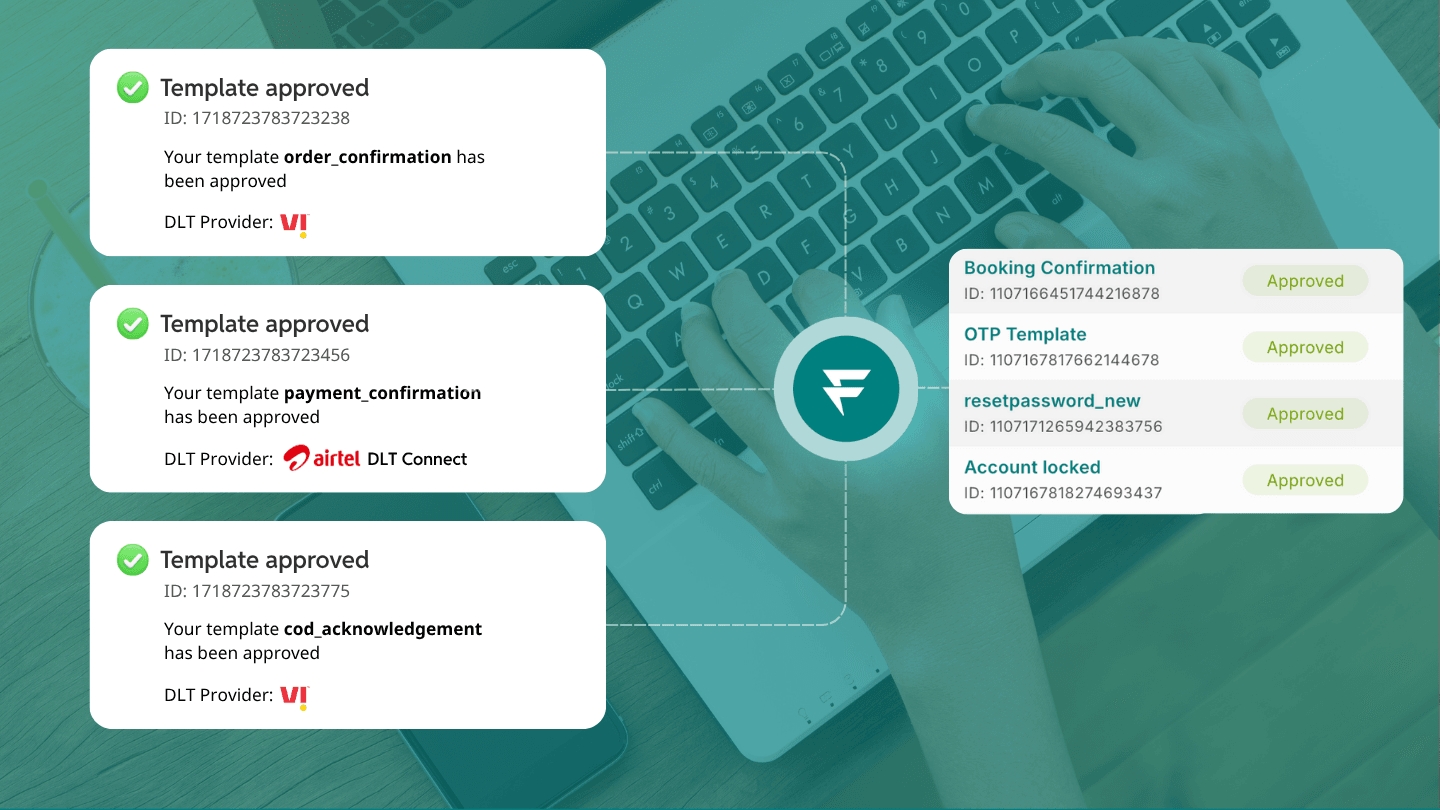
What is DLT?
(If you already know what DLT is and have completed the registration, you can skip the next two sections.)
At its core, DLT is a blockchain-based system that ensures the integrity and authenticity of commercial communications.
When a business registers for DLT, it becomes part of a secure, distributed network that validates and records every message it sends.
Here's a step-by-step breakdown of how DLT works:
1. Registration: A business has to register for a principal entity number with their service provider (Jio, Vodafone, Airtel, etc.). They provide details like their company name, address, and contact information.
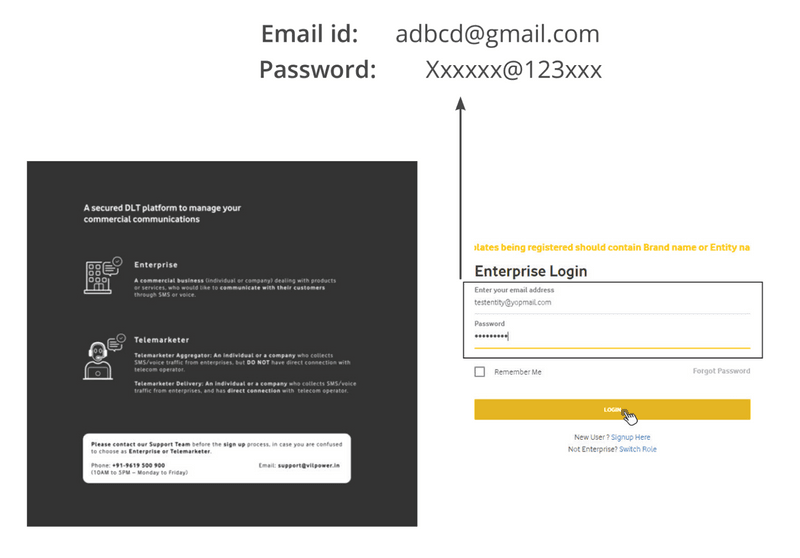
2. Header and template registration: After getting the principal entity ID, businesses need to register their SMS headers, which is the name that appears as the sender. For example, HDFC Bank uses the header “HDFCBK,” while Kotak Bank uses “KOTAKB”. These headers help customers to easily identify the sender. Along with headers, businesses must also register content templates for various scenarios, such as notifying customers about a successful transaction or a credit card payment reminder. These pre-approved messages must be submitted to the DLT portal and approved by the telecom operator before they can be used.
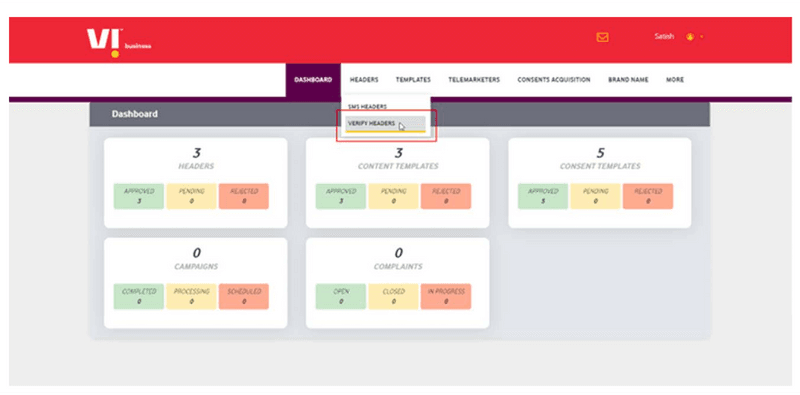
3. Consent management: In addition to content templates, the DLT system includes a consent module. This module allows businesses to create and submit consent templates for approval. Once approved, these consent templates can be used to obtain customers' permission to receive messages from the business.
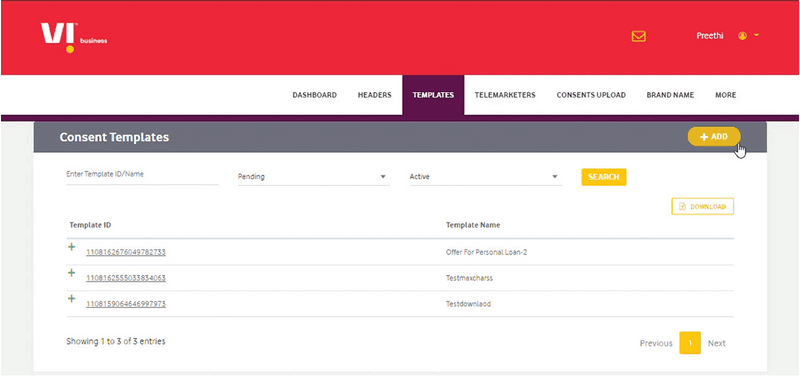
4. Message routing and validation: When a business sends a message using a registered header and template, the DLT system checks if the recipient consented to receive the message. The message is routed through the telecom network to the recipient's device if consent is present.
5. Maintaining records in a blockchain: Every message a registered business sends through the DLT system is recorded on a blockchain ledger. This creates an immutable record of all communications, making it easy to audit and verify the authenticity of messages.
By following this process, DLT ensures that only registered businesses can send commercial messages and that these messages are sent only to customers who have consented.
Step-by-step guide to DLT registration
Registering for DLT can seem daunting, especially when considering the specifics of DLT registration in India. Here’s what you need to do to comply with the regulatory frameworks in India:
Understand the need for DLT: DLT, or Distributed Ledger Technology, is mandatory for all businesses sending bulk SMS in India to ensure transparency and reduce spam. Understanding its purpose helps in smoother registration.
Select the right DLT platform: The Telecom Regulatory Authority of India (TRAI) has approved several platforms. Choose one that aligns with your business requirements for bulk SMS services.
Create an account: Provide basic business details to register on dlt. This is your first step towards compliance.
Submit documents: Upload necessary documents like GST certificate, PAN card, and incorporation certificate. Ensure the documents are valid and up-to-date to avoid delays.
Pay the registration fee: Complete the process by paying the fee required by the chosen DLT platform. This fee varies across platforms, so check the latest details on the DLT portal.
Wait for Approval: The approval process can take a few days after submission. Upon approval, you will receive a Principal Entity ID, which is crucial to send bulk sms, including transactional SMS.
Required documentation for DLT registration
To register for DLT, you'll need the following documents:
Business PAN Card: Validates your business's legal entity.
GST certificate: Shows your business’s tax compliance.
Certificate of incorporation: For companies, this certifies the legal formation of the company.
Company letterhead: Needed for submitting official requests and declarations.
Authorised signatory ID proof: To verify the identity of the person authorised to register and act on behalf of the company.
The importance of DLT registration
Registering for DLT benefits you and your customers, especially with the SMS regulations in place. Here’s why:
Compliance: It ensures that your business adheres to TRAI regulations, avoiding potential penalties and legal issues.
Deliverability: Messages sent through distributed ledger technology (DLT)-registered channels are more likely to be delivered, as telecom service providers recognize them as legitimate.
Brand credibility: DLT registration adds credibility to your SMS marketing efforts, fostering customer trust and loyalty.
Preventing spam and fraud: DLT is a critical safeguard against the widespread problem of spam and fraudulent communications. TRAI aims to prevent unregistered senders from inundating consumers with unwanted calls and messages by mandating registration.
Challenges of managing DLT content templates
Whenever you want to send a new message, you must register the SMS template in the DLT portal and await approval from your service provider. The DLT portal differs for each telecom operator — VILPower for Vodafone, TrueConnect for Jio, DLTConnect for Airtel, etc. and is usually managed by a third-party technology partner.
The content approval process involves submitting various details such as the type of communication, template category, template name, header, and the content itself.
Depending on the telecom service provider, approval times for a content template can range from 3 to 7 days.
While this might look small, the approval timeline becomes a problem for businesses that use several SMS templates.
On average, small companies may have around 50-100 content templates, but larger companies can have 500–800 templates.
To handle this situation, many companies have dedicated resources to manage content template approvals.
Streamlining DLT management with Fyno
Fyno’s robust opti-channel infrastructure platform already allows businesses to efficiently create, organize, and customize templates for various communication channels, including SMS, WhatsApp, email, and push notifications. Additionally, Fyno supports businesses wishing to utilize a bulk SMS service, emphasizing the importance of DLT registration for maintaining security and trustworthiness in SMS marketing. But that’s not all.
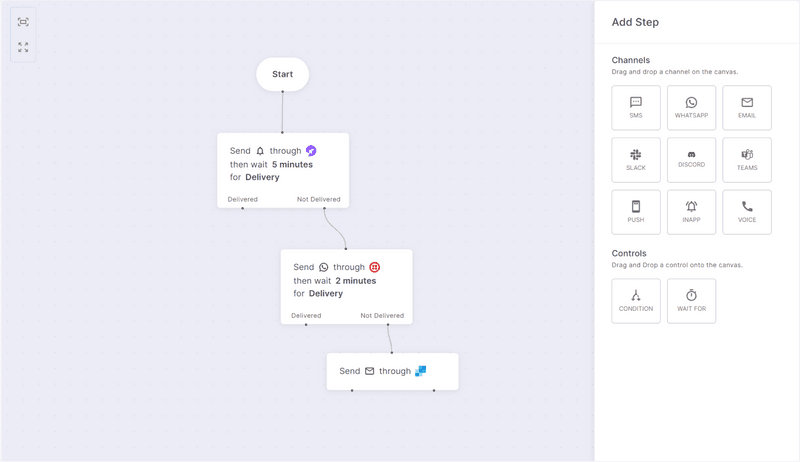
Fyno also facilitates seamless integration with your existing DLT system, allowing you to effortlessly handle all your DLT content approvals and other content templates from a single, user-friendly interface.
The best part is that getting started is super easy – simply enter your Principal Entity Number and credentials into Fyno, and you’ll be ready to streamline your DLT management process.
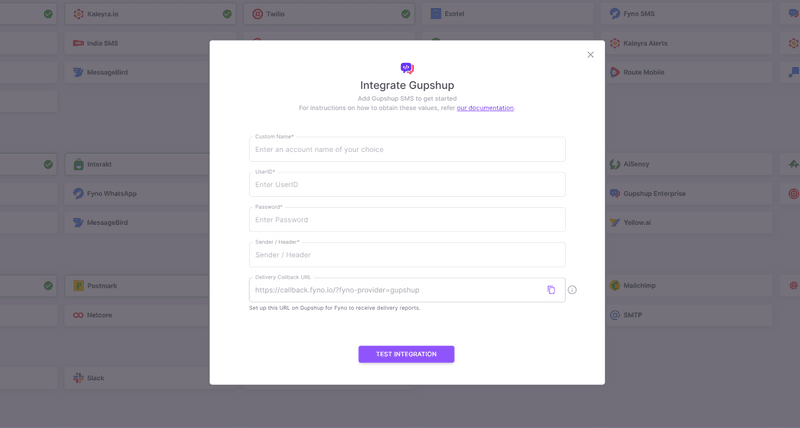
You can start by entering your Principal Entity Number and credentials into Fyno.
You can also effortlessly port your existing content templates into Fyno. This means you can quickly and easily migrate your current templates without disrupting your workflows.
By streamlining your DLT management process with Fyno, you can focus on crafting effective communication strategies while ensuring compliance with telecom regulations.
Fyno’s intuitive platform empowers you to manage your DLT requirements efficiently, saving you time and resources that can be better spent on growing your business.
Interested in knowing more about Fyno? Talk to us to see a personalised demo.
FAQs
1. How does DLT help prevent fraudulent SMS communications?
DLT creates a secure, tamper-proof record of all business messages on a blockchain. It ensures that only registered entities can send messages, thereby reducing the risk of fraudulent SMS communications.
2. Can I manage multiple content templates across different telecom operators on the DLT platform?
Yes, you can manage multiple content templates across different telecom operators, but each template needs to be registered and approved individually by the respective operator.
3. What is the role of consent management in DLT?
Consent management in DLT involves creating and registering consent templates to obtain customer permission to receive messages. This ensures compliance with regulatory standards and builds trust with customers.
4. How does Fyno simplify the DLT content template approval process?
Fyno streamlines the DLT content template approval process by integrating with your existing DLT system. It allows you to manage all approvals from a single interface, reducing manual effort and speeding up the process.
5. What are the common challenges businesses face with DLT registration?
Common challenges include the complexity of managing multiple templates, long approval times, and the need to comply with varying requirements across different telecom operators.
6. Is it possible to migrate existing content templates to Fyno?
Yes, Fyno lets you easily port your existing content templates into its platform, ensuring a seamless transition without disrupting your current workflows.
7. How does DLT ensure compliance with telecom regulations?
DLT ensures compliance by requiring businesses to register and get approval for their SMS headers and content templates, which are then securely recorded on a blockchain ledger, making verifying and auditing communications easy.

